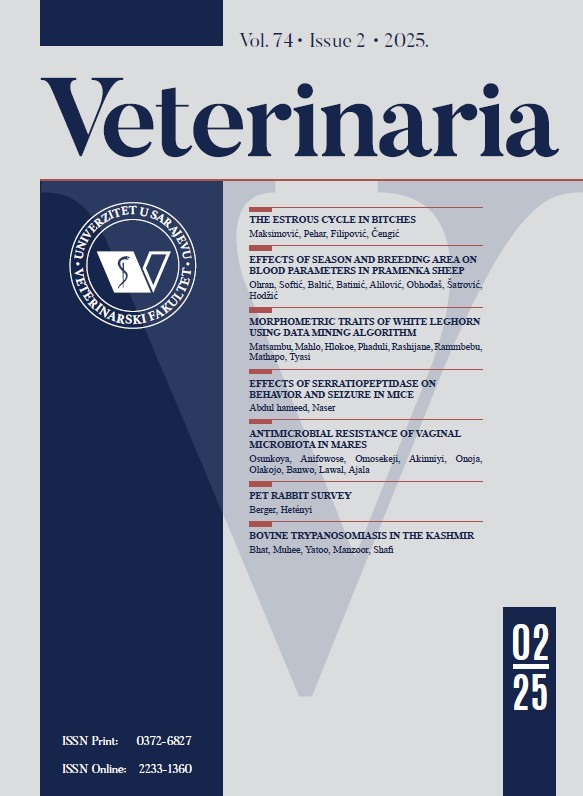Occurrence of antibiotic residues in raw fish Clarias gariepinus and Oreochromis niloticus from intensive rearing system in Benin
Keywords:
Tilapia, African catfish, fish farm, antibiotic residue, BeninAbstract
An observational cross-sectional study was carriedy out to investigate antibiotic residues in Clarias gariepinus and Oreochromis niloticus from the intensive rearing system in Southern Benin. The targeted antibiotic families were tetracyclins, amphenicols, beta-lactams and macrolides. One hundred and forty-four (144) samples were used per antibiotic family for residue detection in the fish muscle, making 576 treated samples. The Charm II method based on radioimmunoassay was used. The results showed an overall residue prevalence of 11.1%, which is attributable to tetracyclines alone. There was no residue of the other antibiotic families in the treated fish muscles. The adult fish were the only contaminated age group with 22.2% residue prevalence compared to the fingerlings (p < 0.05). Likewise, the antibiotic residues were significantly (p< 0.05) more prevalent in Clarias gariepinus (16.7%) than in Oreochromis niloticus (5.6%). The adult fishes are generally fattier than the young ones, and that can lower the fish body antibiotic elimination capability. This first detection of tetracyclines residues in fish produced in Benin shows the need to rule and control antibiotic use in the developing fish industry to preserve consumers’ health.








